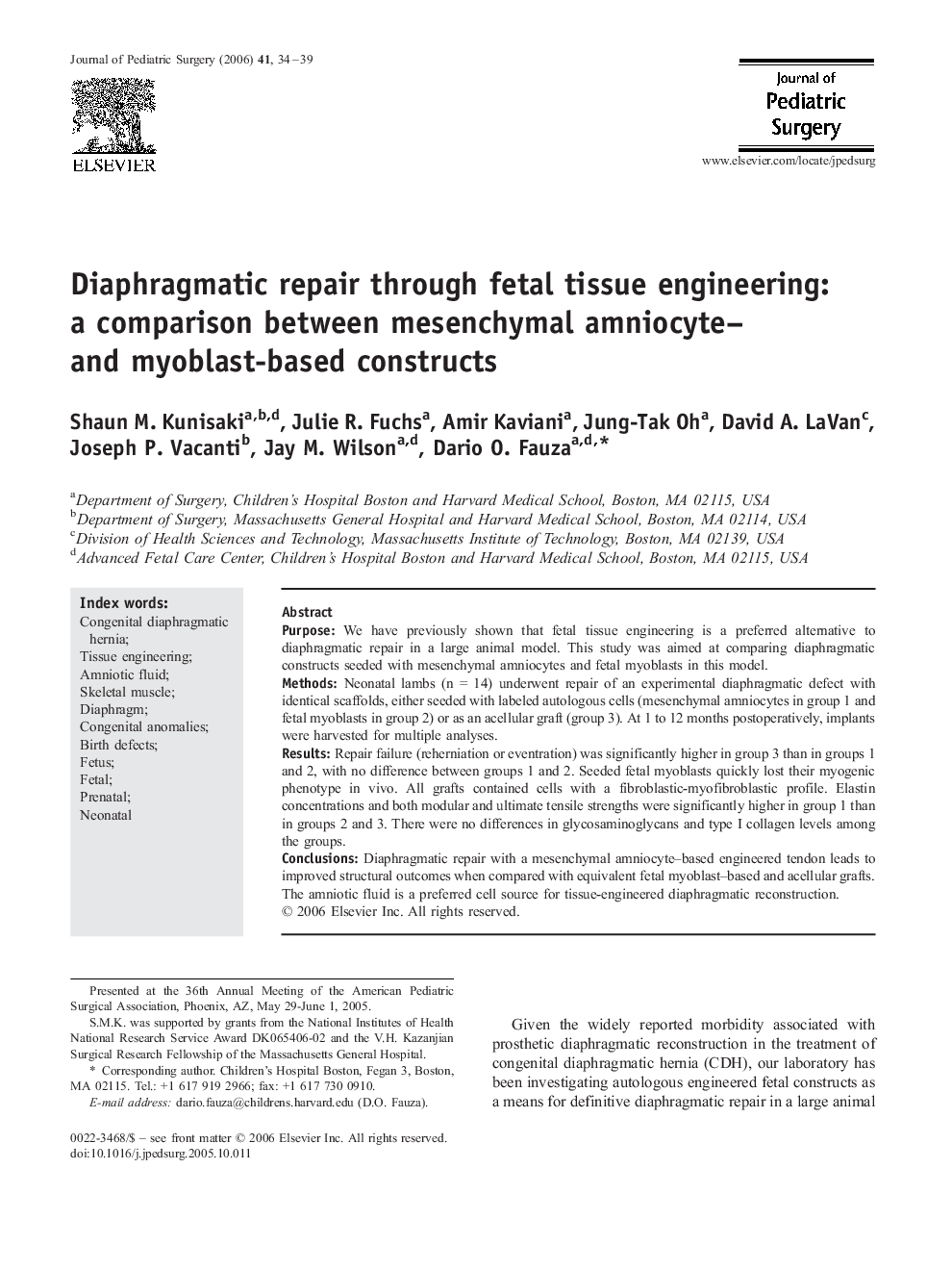| Article ID | Journal | Published Year | Pages | File Type |
|---|---|---|---|---|
| 4160771 | Journal of Pediatric Surgery | 2006 | 6 Pages |
PurposeWe have previously shown that fetal tissue engineering is a preferred alternative to diaphragmatic repair in a large animal model. This study was aimed at comparing diaphragmatic constructs seeded with mesenchymal amniocytes and fetal myoblasts in this model.MethodsNeonatal lambs (n = 14) underwent repair of an experimental diaphragmatic defect with identical scaffolds, either seeded with labeled autologous cells (mesenchymal amniocytes in group 1 and fetal myoblasts in group 2) or as an acellular graft (group 3). At 1 to 12 months postoperatively, implants were harvested for multiple analyses.ResultsRepair failure (reherniation or eventration) was significantly higher in group 3 than in groups 1 and 2, with no difference between groups 1 and 2. Seeded fetal myoblasts quickly lost their myogenic phenotype in vivo. All grafts contained cells with a fibroblastic-myofibroblastic profile. Elastin concentrations and both modular and ultimate tensile strengths were significantly higher in group 1 than in groups 2 and 3. There were no differences in glycosaminoglycans and type I collagen levels among the groups.ConclusionsDiaphragmatic repair with a mesenchymal amniocyte–based engineered tendon leads to improved structural outcomes when compared with equivalent fetal myoblast–based and acellular grafts. The amniotic fluid is a preferred cell source for tissue-engineered diaphragmatic reconstruction.
